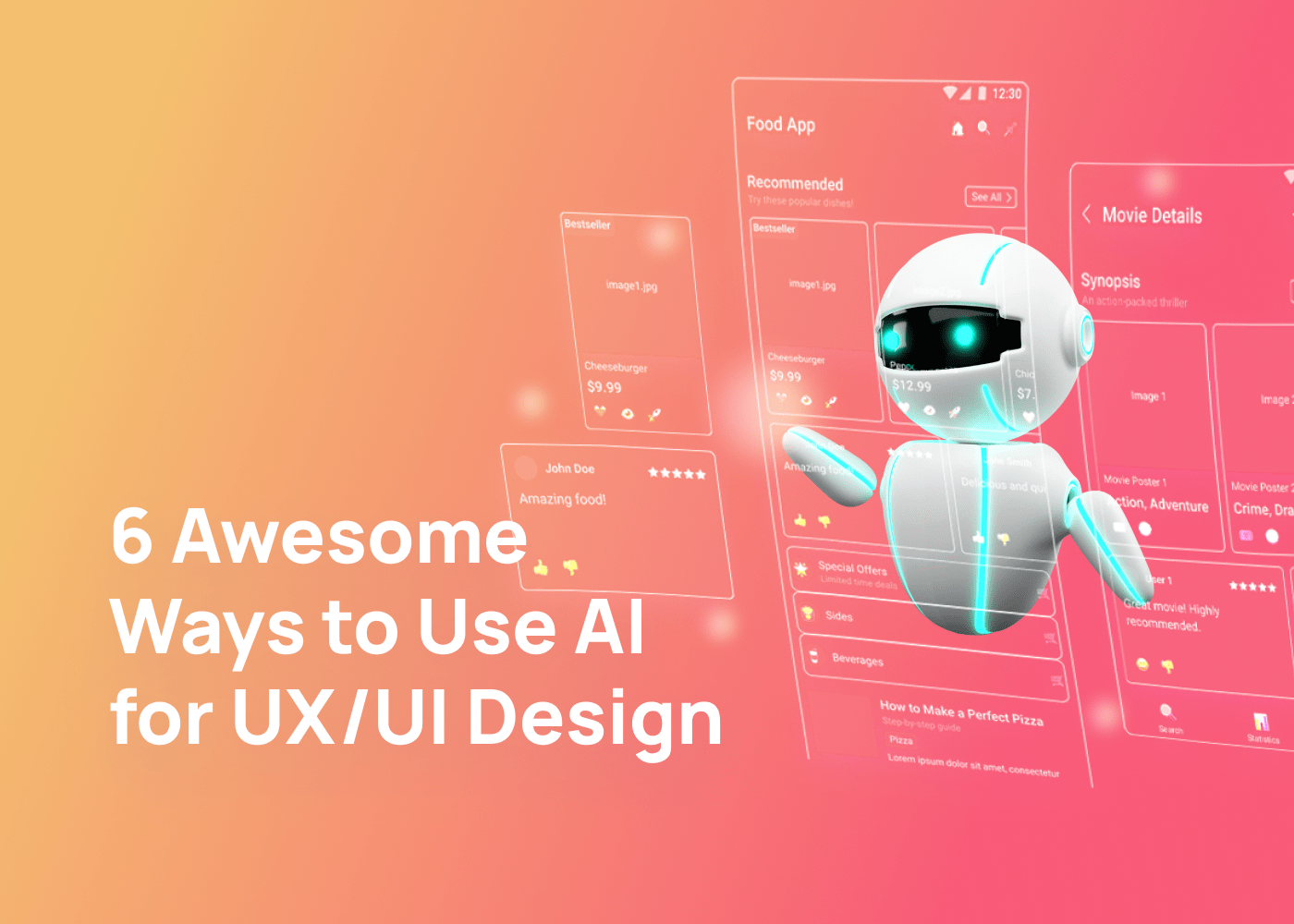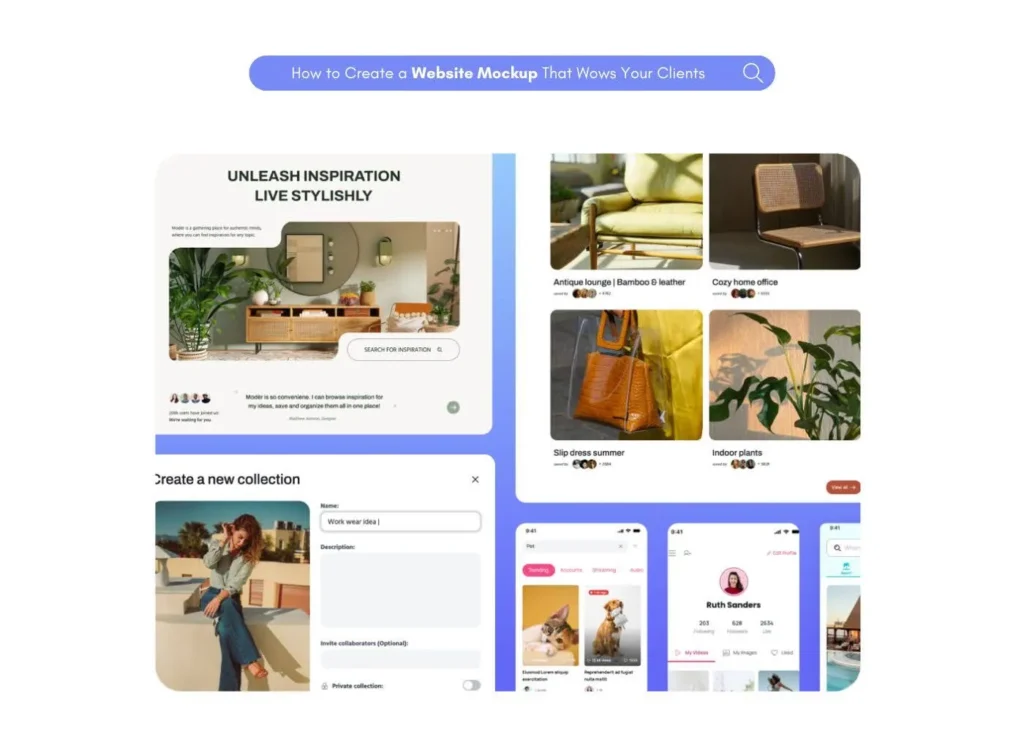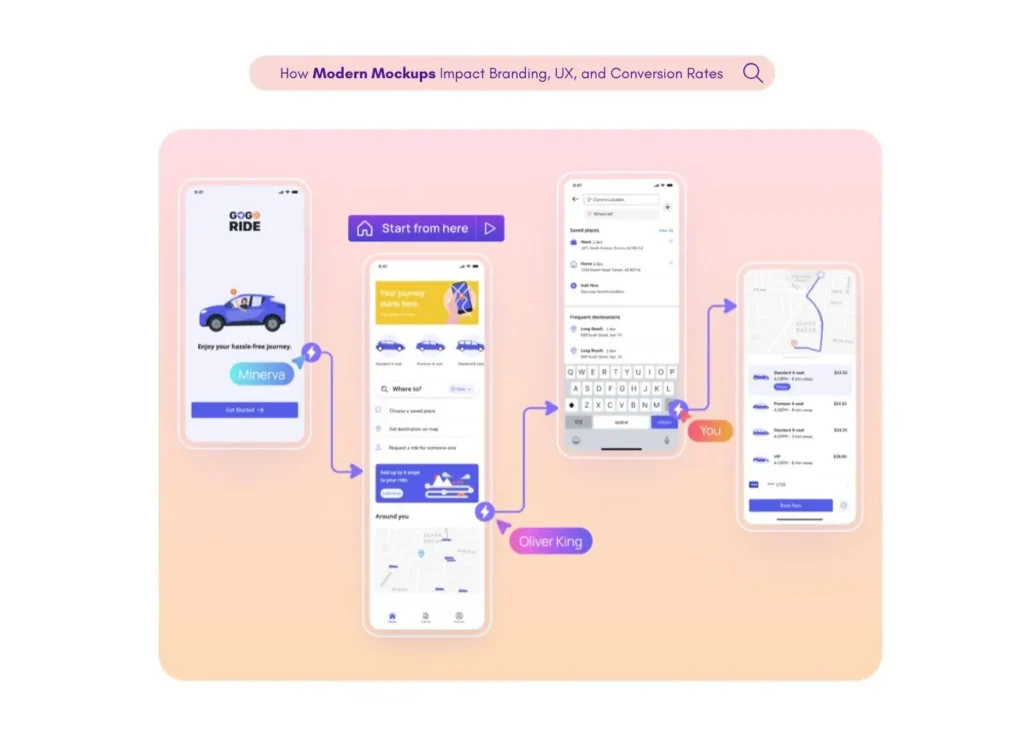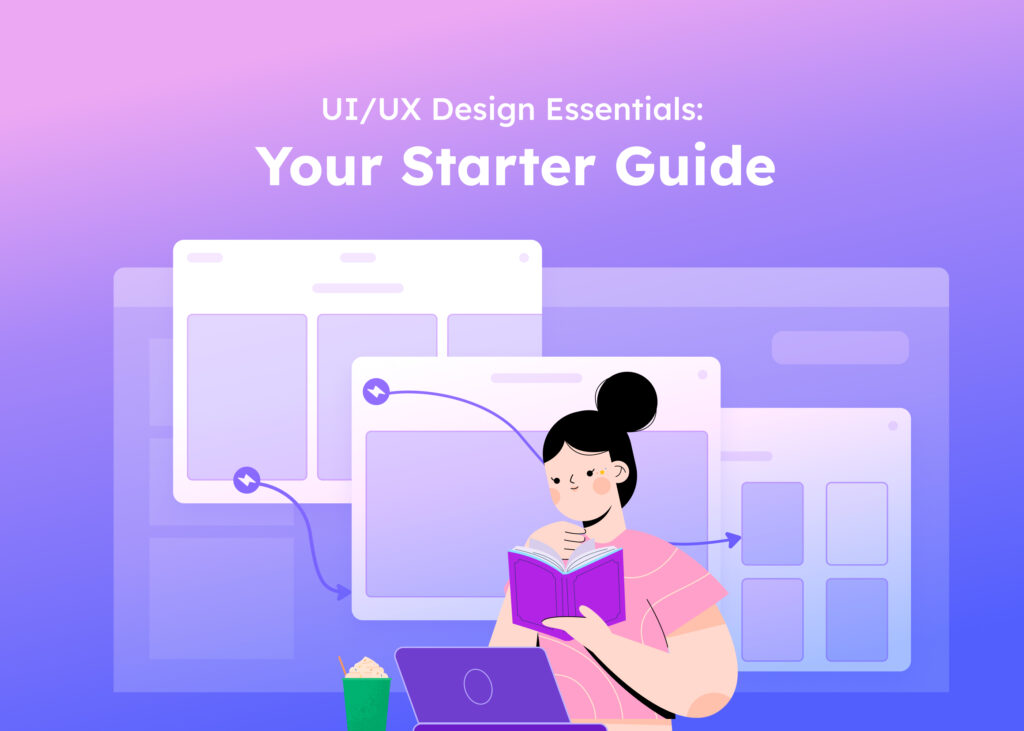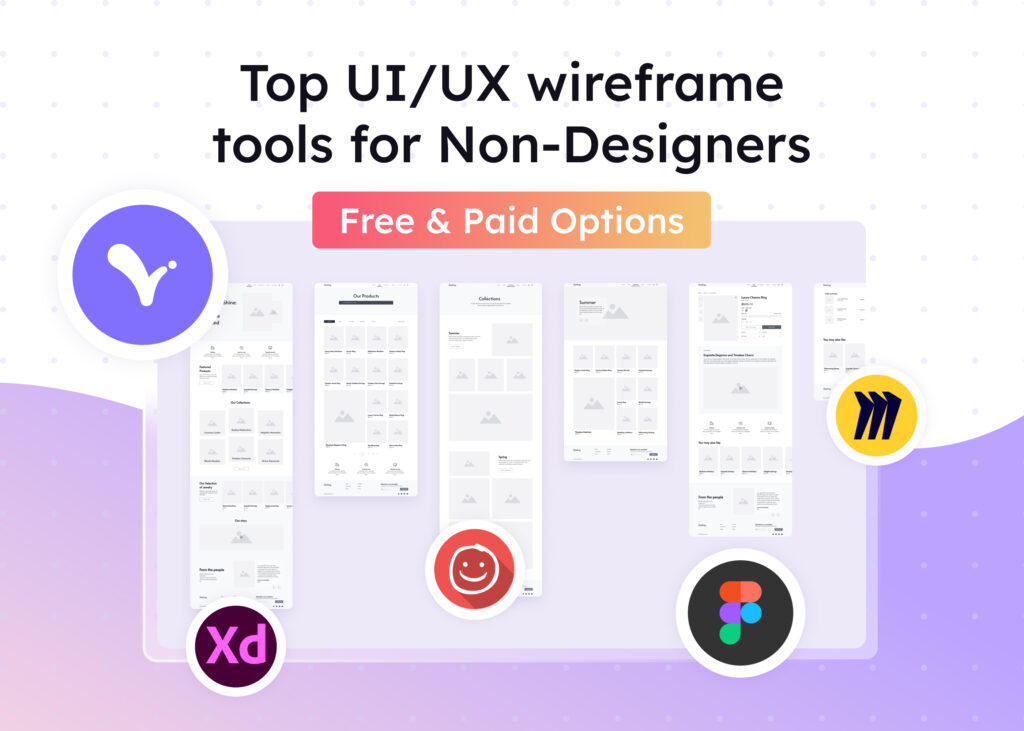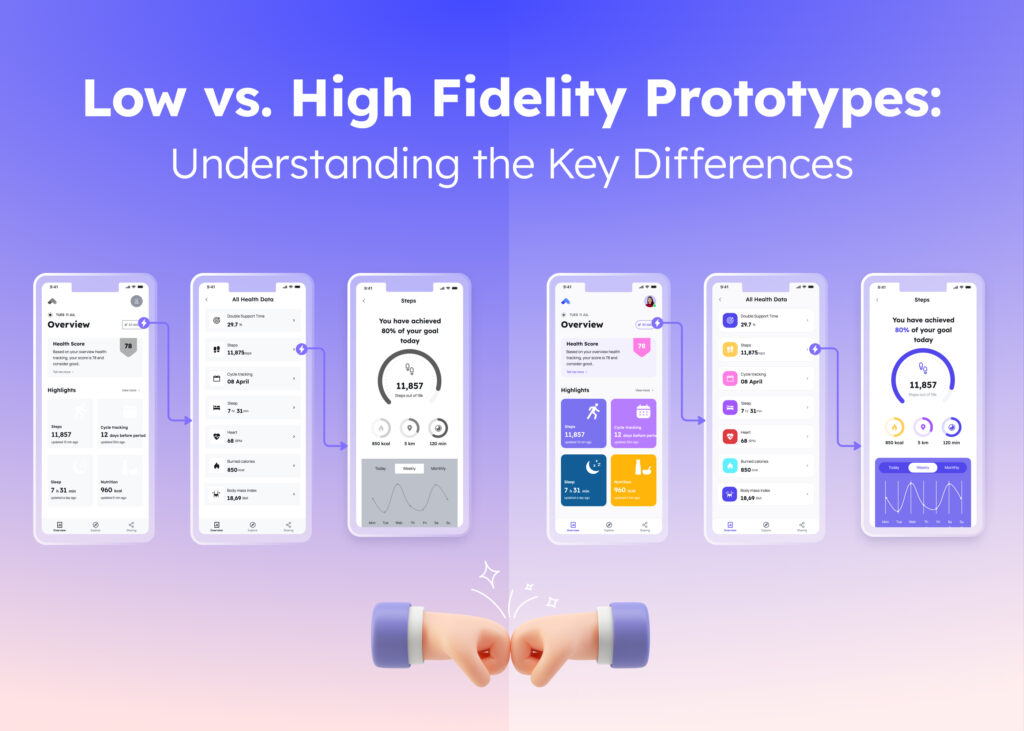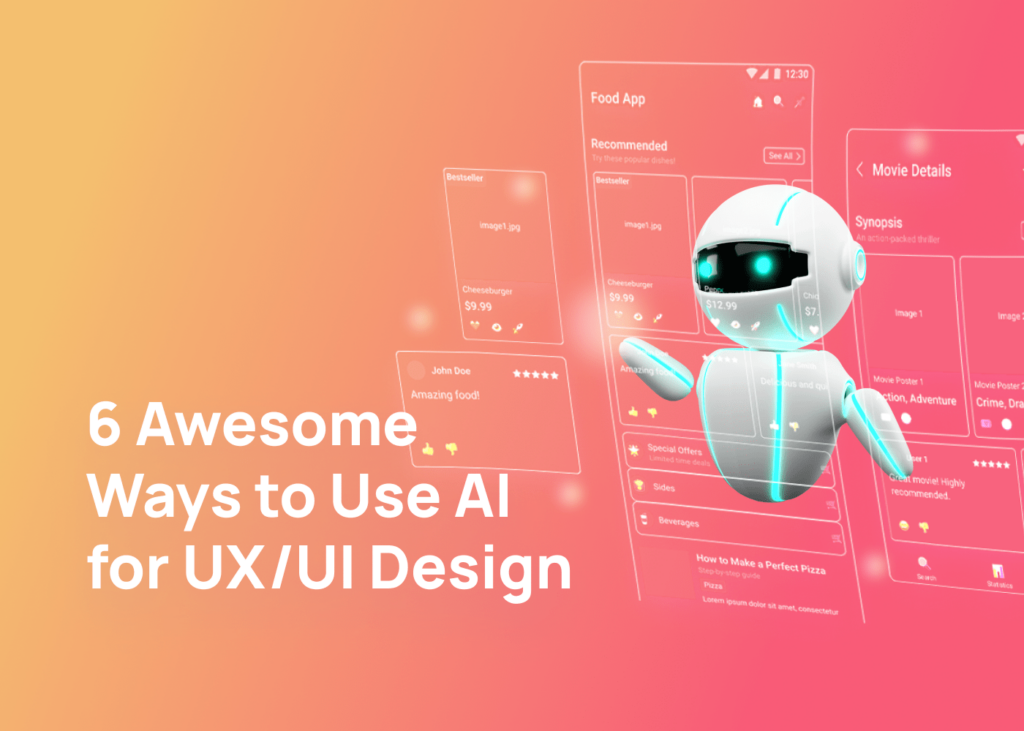
As the realms of AI and design converge, we’re witnessing a revolution that’s upending traditional understandings of UX and UI.
At Visily, we’re at the forefront, harnessing the magic of AI-driven templates and insights. But we’re not alone—here are some other ingenious ways that AI is being leveraged for UX/UI design.
6 awesome ways to leverage AI for UX/UI design
1. Streamlining the digital design process
The evolution of design tools has been nothing short of revolutionary, especially with the integration of AI capabilities. One of the most groundbreaking features in modern tools, including platforms like Visily, is the ability to seamlessly convert hand-drawn sketches and app screenshots into interactive wireframes and prototypes. This not only streamlines the design process but also bridges the gap between initial ideation and digital representation.
Imagine the convenience of sketching a rough design on paper during a brainstorming session and then having an AI tool instantly digitize it into a functional prototype. This capability, such as the Sketch-to-Wireframe AI tool, significantly reduces the time traditionally spent on manual digitization and allows users to quickly iterate, refine, and test their ideas. Furthermore, the process is not limited to just hand-drawn sketches. Users can also input app screenshots, and the AI will interpret and transform them into editable wireframes, making the transition from concept to digital design smoother than ever.
In addition, platforms like Visily come equipped with an extensive library of built-in templates. These templates cater to a wide range of design needs and can serve as a starting point for product managers. Instead of building from scratch, they can select a template closest to their vision and customize it further, all while leveraging the power of AI to enhance the design.
The fusion of AI-driven automation with human creativity ensures that the design process is both efficient and innovative. As the design world continues to evolve, the synergy between AI and design promises a future where ideas are brought to life with greater ease and accuracy.
2. User testing & prototyping
By harnessing the power of AI, platforms like Visily have revolutionized user testing and prototyping in UX/UI design. These tools simulate user interactions on prototypes, providing rapid insights into potential design pain points and user behavior patterns. This immediate feedback allows product managers to refine their designs, ensuring a user-centric approach from the outset.
Moreover, AI-driven prototyping can predict user interactions, offering optimization suggestions. This not only streamlines the design process but also ensures that the end product aligns closely with user expectations.
Incorporating AI into the prototyping phase drastically reduces manual testing time, offering a comprehensive understanding of user behavior.
3. Deep dive into user behavior
Understanding user behavior is paramount for any UX/UI designer. It’s the insights derived from user interactions that inform design decisions, ensuring that products and services align with user expectations. Tools like Hotjar and Google Analytics have long been staples in the designer’s toolkit. However, with the integration of AI capabilities, these tools have become even more powerful.
For instance, Hotjar, traditionally known for its heatmaps and session recordings, can now, with the help of AI, predict user behavior patterns, identifying potential drop-off points or areas of friction in the user journey. Similarly, Google Analytics, which provides a wealth of data on user interactions, can now offer predictive metrics, giving designers a glimpse into future user behavior based on current trends.
Another tool worth mentioning is Pendo, which combines analytics with in-app messaging. With its AI capabilities, Pendo can identify user segments that might benefit from specific in-app messages or guides, ensuring users get the most out of the platform.
These enhanced tools provide a more granular analysis, going beyond traditional metrics. They can identify patterns, pain points, and even predict future behavior, ensuring that designers have all the information they need to create user-centric designs. As AI continues to evolve, its integration into analytics tools promises a future where designers can anticipate user needs, creating experiences that are proactive rather than reactive.
4. Creating detailed personas with AI
The creation of user personas has always been a cornerstone in the UX/UI design process. Traditionally, these personas were crafted after extensive user research, interviews, and surveys. However, with the advent of AI tools like Crystal, the process has been revolutionized. By analyzing data from diverse sources, including social media profiles, browsing habits, and email interactions, AI can generate detailed and nuanced user personas in a fraction of the time.
For instance, consider a designer working on a new e-commerce platform. Instead of conducting numerous interviews to understand the target audience, they can use AI to analyze potential users’ online behaviors, purchasing patterns, and even product reviews. This data-driven approach not only speeds up the persona creation process but also ensures a higher degree of accuracy. The result? Designs that truly resonate with the target audience, leading to enhanced user engagement and satisfaction.
As AI continues to evolve, its ability to sift through vast amounts of data and identify patterns will only get better, making it an indispensable tool in the modern designer’s toolkit.
5. Automating placeholder copy creation
The days of relying solely on “lorem ipsum” as a placeholder in design drafts are fading. Modern AI tools, such as Copy.ai, are stepping in to provide more contextually relevant and dynamic placeholder content. These tools harness the power of AI to generate suggestions for headlines, body text, and even call-to-action buttons.
While the final content should ideally be crafted or refined by human writers to ensure brand voice consistency and relevance, AI-generated content, such as Visily’s upcoming Magic Content AI feature, can serve as an excellent starting point. It provides a more realistic representation of the final product, helping stakeholders visualize the end result more effectively.
6. Harnessing AI for fresh perspectives
In the realm of design, thinking outside the box is often the key to innovation. AI, with its vast computational capabilities, can offer fresh perspectives that might not be immediately apparent to human designers. By analyzing vast datasets, AI can identify patterns, trends, and insights that can be harnessed to drive design decisions.
For instance, consider Screenshot Editor AI from Visily. This innovative tool enables experimentation with various UI options effortlessly. By simply uploading a screenshot, users can leverage the power of AI to explore different UI layouts until they find the one that resonates best with their vision. This not only streamlines the design process but also empowers product managers to make data-informed decisions, ensuring optimal user experience.
Also consider the realm of color theory. AI tools can analyze thousands of successful websites, identifying color palettes that resonate most with users across different sectors. Such insights can be invaluable for designers looking to choose a color scheme for a new project. Similarly, AI can analyze user interactions with different UI elements, offering insights into what designs are most intuitive and user-friendly.
In essence, AI can act as a digital brainstorming partner, offering new ways to view challenges and posing questions that can lead to innovative solutions. By leveraging AI’s analytical capabilities, designers can gain fresh perspectives, ensuring their designs are both innovative and user-centric.
How will you improve your UX/UI design with AI?
The fusion of AI with UX/UI design is reshaping the design landscape. By leveraging AI tools and techniques, designers can enhance efficiency, foster creativity, and deliver optimized user experiences. As AI continues to evolve, its role in design will only become more pronounced, making now the perfect time to embrace its potential.
As the horizons of AI expand, there’s no better time to be at the forefront of this revolution. Interested in exploring the transformative potential of AI for your design projects? Sign up for Visily for free today and let’s shape the future of design together.




